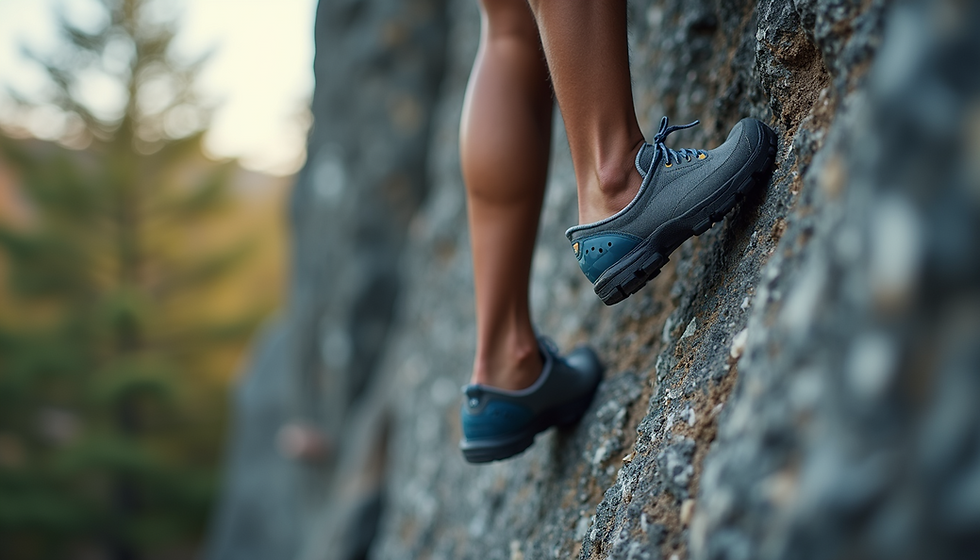How to Start Sport Climbing
- info400279
- Dec 30, 2023
- 3 min read
Sport Climbing
Sport climbing requires slightly more investment in equipment and skills training than bouldering, although if you have been leading indoors you are probably already partly prepared for a day clipping bolts.
Equipment-
The minimum additional equipment that is required on top of that for indoor leading includes a rope that is long enough for leading outdoors (usually 50-80m), a set of quickdraws (10+) ,a screwgate carabiner and a climbing rated helmet. There are a few extras that can help to improve the experience, such as a clipstick, adjustable lanyard like the Petzl Adjust and a few extra slings and carabiners.
Skills -
The process of leading a sport climb is very similar to indoor leading, the only main difference being the need to equip the route with quickdraws yourself, rather than those already installed. When clipping it is important to avoid Z clipping and back clipping the same as indoors and you also need to understand how quickdraws interact with bolts to make sure you don’t clip them in such a way that they might accidentally become unattached (usually this means the backbar of the carabiner faces the direction of the next bolt).
Another essential thing to do is tie a knot in the end of the rope, because unlike indoor climbing outdoor crags vary in height and so we want to make it impossible to lower a climber off the end of the rope.
Rethreading -
The main new skill to learn for leading a sport climb is rethreading, where the rope is passed through a closed loop (usually a ring or maillion) at the top of the climb and is then reattached to the harness so that the climber can lower down leaving nothing behind. The best way is to attach yourself to the anchor at the top using a lanyard, then pass a bight of rope through the anchor, tie it into a figure of 8 and clip this to the belay loop on the harness using a locking carabiner. Once this is done your belayer takes you tight, you undo your original knot and remove the lanyard (double checking before removing anything). The climber is then able to lower down without leaving any equipment behind.

Cleaning and Top Roping -
If you want to top rope a climb, make sure you top rope off your own equipment rather than fixed belays. The simplest setup for this is back to back quickdraws on the anchor bolts at the top and the reason we do this is so that we don’t wear the fixed protection more than we need to (normal lowering and rethreading is fine). Once you have finished top roping, the route can be cleaned of gear. Its important to think about redundancy when doing this as sometimes people top rope up and then rethread without any redundancy, for example only clipping onto on bolt. When you rethread normally you have the redundancy of all the bolts below you being clipped, so make sure you clip the top rope to the final few bolts to the top so that if you make a mistake you have a bit of a failsafe in case of error.
Crag ethics -
Sometimes people leave their quickdraws in routes because they are projecting a route, don’t steal them! If you want to try the route and the climber is around ask permission, 99% of the time the answer will be yes. If they aren’t around the expectation is that anyone can use them, however whenever using someone else's gear make sure you check that it is in good condition before using it. The same principles apply to ropes already in place, but be especially wary of ropes left unattended.
When trying routes people are projecting it's also polite to brush the holds on the way down after you have finished climbing, this will make it much nicer for the next person who goes for the send!
A note on safety: Be careful when moving around a crag outdoors, there are lots more hazards that indoor climbing. Watch out for loose rock, both on the crag and underfoot, if you do dislodge something make sure you shout to alert other climbers (In the UK we shout "below" or "rock". Other hazards might be; unexpected drops, exposed scrambles to get to the bottom of a climb, animals, tides if you are climbing by the sea and many more.
In the next post we will look at how to start trad climbing outdoors.



Comments